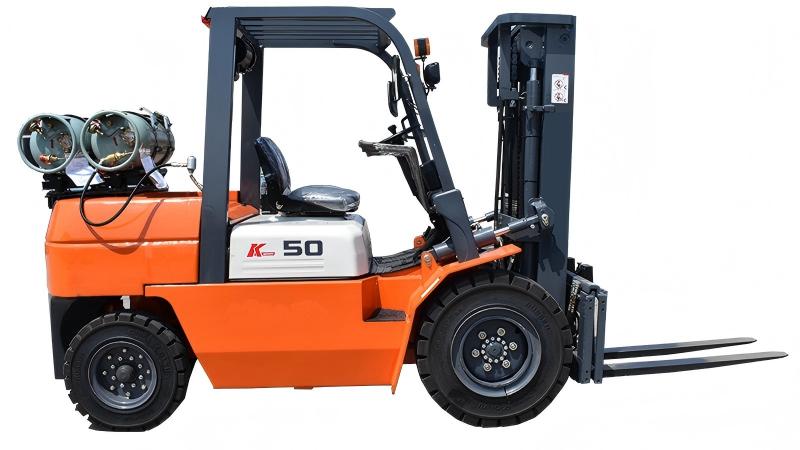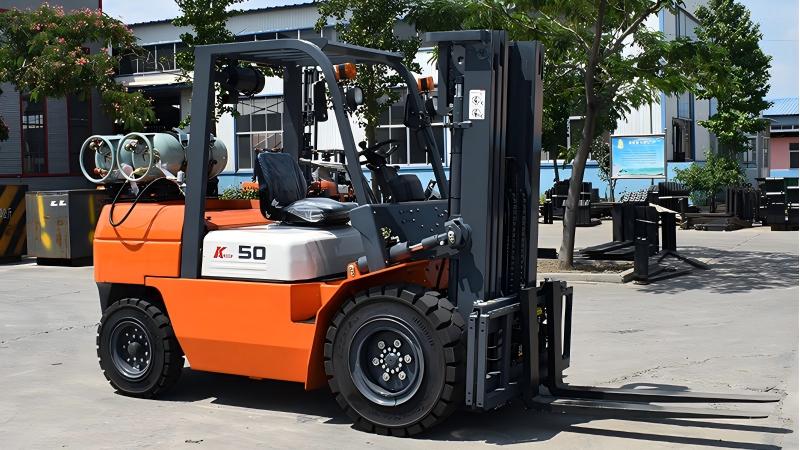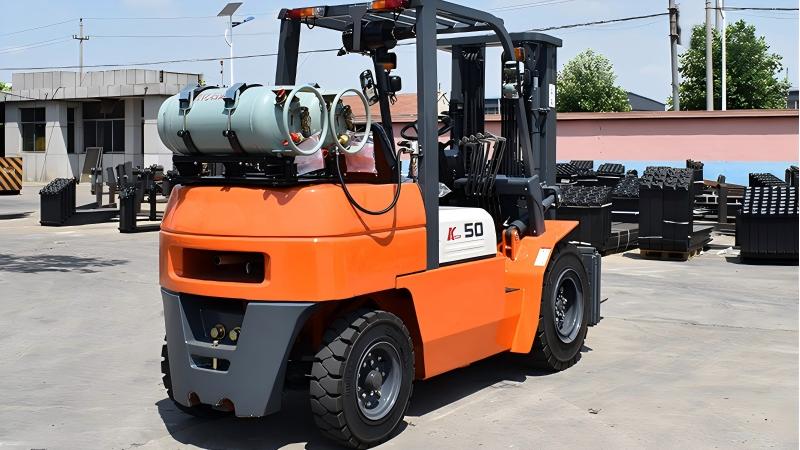What Attachments Work with Dual-Fuel Forklifts?
Introduction
Dual-fuel forklifts, which operate on both gasoline and propane, have become an essential piece of equipment in various industries due to their versatility and efficiency. These forklifts are capable of switching between fuel sources, offering operational flexibility and greater cost-effectiveness compared to single-fuel forklifts. The choice of attachments for dual-fuel forklifts is equally important to ensure that these machines perform optimally in a range of applications.
Forklift attachments expand the capabilities of the machine, enabling it to handle a wider variety of materials and perform specific tasks more efficiently. However, not all attachments are compatible with dual-fuel forklifts, and selecting the right one can make a significant difference in productivity, safety, and cost-efficiency.
In this article, we will explore which attachments work best with dual-fuel forklifts, how to choose the right ones, and the benefits they offer to operators across industries.
Section 1: Overview of Dual-Fuel Forklifts
A dual-fuel forklift is equipped with an engine capable of running on two different fuel types—gasoline and propane. This allows the forklift to be more versatile, adapting to various operational needs. For example, if one fuel type becomes unavailable or too expensive, the operator can easily switch to the alternative.
How Dual-Fuel Forklifts Work
The dual-fuel system uses a combination of gasoline and propane, offering operators the ability to optimize fuel use based on availability and cost. Dual-fuel forklifts tend to have more extended operational hours than their single-fuel counterparts because they can run on propane for longer periods and switch to gasoline when needed.
Advantages of Dual-Fuel Forklifts
Cost Efficiency: Propane tends to be less expensive than gasoline, and dual-fuel forklifts allow businesses to take advantage of price fluctuations in fuel markets.
Environmental Impact: Propane is a cleaner fuel compared to gasoline, reducing the environmental footprint of the forklift.
Operational Flexibility: Operators can use either fuel based on availability, making dual-fuel forklifts ideal for a variety of settings, including outdoor or harsh environments.
Industries That Benefit from Dual-Fuel Forklifts
Industries such as warehousing, construction, and logistics benefit the most from dual-fuel forklifts. These industries require forklifts that can operate in a range of environments, whether indoors or outdoors, and with varying fuel availability. Dual-fuel forklifts provide the flexibility to meet these demands efficiently.
Section 2: Common Forklift Attachments
Forklift attachments are specialized tools designed to perform specific tasks and make the forklift more versatile. Here are some common types of attachments used with forklifts:
Pallet Forks: The most common attachment, used to lift and move standard-sized pallets.
Side-Shifters: Allow the operator to shift the load laterally without having to move the forklift itself.
Lifting Beams: Used for lifting heavy or long items that do not have standard lifting points.
Clamps: Special attachments designed for handling irregular loads like paper rolls, carpets, and barrels.
Rotators: Enable the operator to rotate loads, often used in the construction or recycling
These attachments can drastically increase the versatility of a forklift, but ensuring compatibility with dual-fuel systems is crucial for safety and performance.
Section 3: Attachments Compatible with Dual-Fuel Forklifts
When it comes to dual-fuel forklifts, several attachments are designed to work seamlessly with these systems. Below are the most common and useful attachments for dual-fuel forklifts:
1. Pallet Forks
Pallet forks are the most common attachment and come in various sizes and weight capacities. They are essential for moving pallets and are compatible with both manual and dual-fuel forklifts. When using a dual-fuel forklift, operators should ensure that the load is balanced to prevent tipping, particularly when using larger or heavier forks.
2. Side-Shifters
Side-shifters are designed to allow the operator to move the load horizontally without repositioning the forklift. This feature is crucial when working in tight spaces or when accuracy is required in load placement. Side-shifters work well with dual-fuel forklifts, offering the same precision and flexibility regardless of the fuel type.
3. Lifting Beams
Lifting beams are used to lift large, heavy, or unusual loads that cannot be handled by standard forks. These attachments are commonly used in industries such as construction and manufacturing. Dual-fuel forklifts equipped with lifting beams provide operators with enhanced lifting capability without compromising fuel efficiency.
4. Rotators
Forklift rotators are used to rotate loads, which is particularly useful in applications such as recycling or construction. Rotators are often designed to work with a variety of forklifts, including dual-fuel models, providing smooth rotation capabilities while maintaining the power needed to handle heavy loads.
5. Drum Handlers
Drum handlers are ideal for transporting and stacking drums, barrels, or other cylindrical objects. They are commonly used in chemical, oil, and manufacturing industries. Dual-fuel forklifts equipped with drum handlers offer added flexibility, allowing operators to work with multiple fuel sources depending on the environment.
6. Clamps
Clamps are designed to handle irregular loads like paper rolls, carpet rolls, and barrels. Depending on the industry, dual-fuel forklifts can be fitted with various clamps to safely handle specific loads, making them suitable for diverse warehouse operations.
7. Fork Positioners
Fork positioners adjust the width between the forks automatically to accommodate different pallet sizes, improving efficiency during high-speed operations. These attachments can be easily integrated with dual-fuel forklifts to enhance handling in warehouses or shipping yards.
8. Reach Forks
Reach forks extend the lifting range of the forklift, enabling operators to access high racks and shelves without additional equipment. These are perfect for warehousing and storage operations. Dual-fuel forklifts equipped with reach forks can handle longer operational hours due to the flexibility in fuel choice.
9. Snow Plows and Sweepers
For outdoor environments, especially in colder climates or construction sites, snow plows and sweepers can be attached to dual-fuel forklifts. These attachments are useful for clearing pathways, making them suitable for operations where both propane and gasoline are needed to ensure smooth running.
10. Forklift Masts and Extensions
Forklift masts and extensions increase the lifting height and load capacity of the forklift. Dual-fuel forklifts, with their power-efficient engines, provide optimal lifting performance even with extended masts, helping businesses move heavier loads to greater heights.
Section 4: Benefits of Using Attachments with Dual-Fuel Forklifts
Using the right attachments with dual-fuel forklifts provides several benefits:
Increased Operational Flexibility: Attachments allow dual-fuel forklifts to perform a variety of tasks, from lifting heavy loads to performing specialized functions, ensuring versatility.
Enhanced Productivity: The use of attachments like side-shifters and clamps can improve the speed and efficiency of material handling, reducing time spent in manual repositioning.
Cost-Efficiency: Attachments help operators perform multiple functions without needing additional machinery, lowering operational costs.
Safety: Specialized attachments such as rotators and drum handlers improve the safety of handling irregular loads, reducing the likelihood of accidents.
Section 5: Key Considerations When Choosing Attachments for Dual-Fuel Forklifts
When selecting attachments for dual-fuel forklifts, businesses should consider several factors:
Load Capacity and Compatibility: Ensure that the attachment can handle the intended load and is compatible with the dual-fuel system.
Attachment Weight and Balance: Heavy attachments can affect the stability and balance of the forklift. Consider the total weight, especially when using extended reach forks or lifting beams.
Durability: Attachments should be durable enough to withstand frequent use and the demands of dual-fuel engines.
Safety: Verify that all attachments comply with safety standards to avoid accidents, particularly when handling hazardous materials.
Training: Proper training for operators is essential to safely use attachments, especially when working with complex machinery like dual-fuel forklifts.
Section 6: Maintenance of Dual-Fuel Forklifts and Attachments
Maintaining a dual-fuel forklift is essential for maximizing its lifespan and performance. Regular maintenance checks should include:
Engine and Fuel System: Regularly inspect the engine, fuel lines, and tanks to ensure they are functioning properly, especially when switching between gasoline and propane.
Attachments: Keep attachments clean and free of wear and tear. Lubricate moving parts and check for any damage that might impair functionality.
Brakes and Tires: Inspect brakes and tires regularly for wear, especially when using attachments that increase the load or require more power from the forklift.
Conclusion
Dual-fuel forklifts provide unmatched versatility, and when paired with the right attachments, they can improve productivity, safety, and operational efficiency across various industries. From pallet forks and side-shifters to specialized attachments like drum handlers and snow plows, these machines can handle a wide range of tasks. By considering factors like load capacity, attachment compatibility, and maintenance, businesses can ensure they are making the most out of their dual-fuel forklifts and the attachments they use.
Post time:Jul.18.2025



